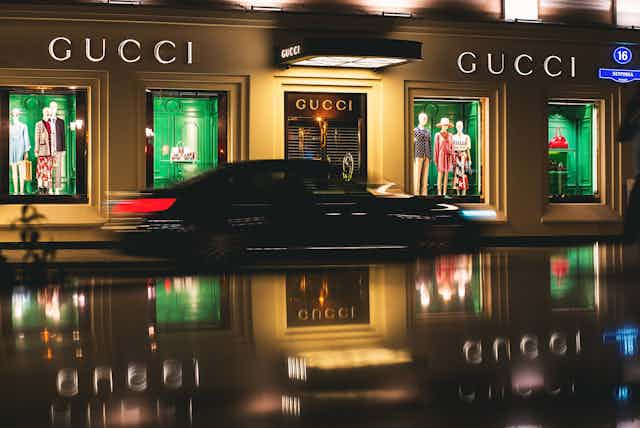I recently purchased a pair of sandals. Not just any sandals, but an $850 pair of sandals. They are neatly stitched from calfskin leather, an “essential piece in every wardrobe,” or so I’ve been told.
The absurdity of this is not lost on me. But I, like so many young people my age, want to keep up and stay in-step with the city’s sartorial styles and the fashionable people who wear them.
In our visual and virtual culture, visions and dreams of fashionable people and the luxurious things they purchase are constantly up for show. Young people know this well. They are repeatedly invited to follow, and “like,” lives and lifestyles once kept hidden by the well-to-do.
A look to Instagram’s Discover page or TikTok’s For You page, provides a window into “rich kids” and “luxury fashion hauls” as well as critical commentary on the season’s latest staples and the “new” versus “old” money looks they might lend themselves to.
Together, content of this kind plays an important part in fostering a sense of aspiration and desire, in stoking anxiety about who we are and, what we should buy.
Read more: Love Island ditches fast fashion: how reality celebrities influence young shoppers' habits
It may come as little surprise that, following a downturn in sales driven by the COVID-19 pandemic and media fanfare surrounding “the end of fashion,” luxury products like the sandals I stepped out to buy are being sold with great speed.
And much or most of these sales are driven by consumers under the age of 35, with reporters and scholars documenting a new cohort of young people eager to acquire luxury goods of their own.
Some will no doubt make their purchase online where, as sociologist and philosopher Zygmunt Bauman observed, our shopping can be “broken up” into dozens of “joyful moments.” Still others will take their business to brick-and-mortar stores where class-based aspirations (and anxieties) take meaningful form. My research looks at how cultural workers like stylists and visual merchandisers influence our purchases.

A place for aspiration
Retail giants in the luxury sector like Chanel, Tom Ford and Dior, invest heavily in their brick-and-mortar stores — a physical pronouncement of their brands’ prestige and authority in the fashion landscape.
In the past five years, these retailers have taken significant steps to court Millennials and members of Generation Z, with routine invitations to come in and purchase everything from small leather goods and high-end trainers, to micro-bags and belts.
These luxury retail environments feel “expensive” and “exclusive,” and this is the result of co-ordinated efforts on behalf of a team of cultural workers who often go without notice.
Visual merchandisers, for example, position products and arrange decorative fixtures to produce a vision of beauty and glamour. Sales associates and stylists connect with clients and drive sales in store.
I interviewed several cultural workers to identify and explain how they do this, how they leverage a series of techniques to foster aspiration, class-based desires and anxieties to command three- and four- figure purchases.
They cite current designers and fashion trends, lending knowledge to clients with cash and credit to spend. Stylists also make use of carefully crafted stories related to where clients’ purchases might be worn and what these purchases say about them. Put differently, they romance their clients with visions and dreams of who they could be.
All the while, the material dimensions of place give stylists and merchandisers authority and what sociologists call “capital.”

Pony-hair upholstered furniture, tufted cushions and bronzed mirrors are some of the things that help them produce a sense of awe among clients who in turn, defer to their stylists and their well-furnished fashion knowledge. But they do something more too. These physical and symbolic markers of place remind purchasers that some, but not all are welcome inside.
Historian Sarah Miller-Davenport has discussed what it means to feel unwelcome in these settings; to be, as she puts it, a “trespasser, a class-tourist in a rich person’s department store.”
For young people, the physical and symbolic markers of these luxury retail environments bear significant weight. They communicate “a sense of one’s place” and suggest the purchaser might be made more fashionable and therefore worthwhile, if and when they purchase luxury products the likes of which we see on celebrities and social media.
Of course, there are few of us who can truly afford to make these purchases and fewer still who can make them regularly, leaving many stretched thin and others, in debt to their aspirations and desire.

